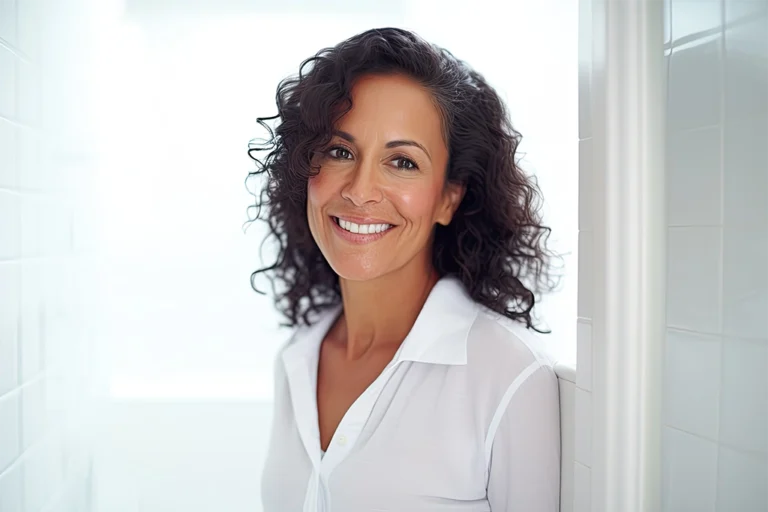Getting a 3D mammogram is the same imaging process as getting a traditional mammogram, except you will receive 2D scans and a 3D digital reconstruction of your breasts. A 3D mammogram offers higher quality and more detailed results compared to a traditional mammogram. If you are a woman over 40, doctors recommend getting an annual mammogram to screen for breast cancer (especially if you have a family history of the disease). A 3D mammogram is perfect for annual screenings because of the benefits it offers not only to all women but especially to women with dense breast tissue. Although 3D mammograms are more expensive, they can save you from having to undergo more imaging tests later and offer more clarity in diagnosis than a traditional mammogram.
3D mammograms make up about half of the mammograms performed last year. Like a traditional mammogram, your breast will need to be compressed to complete this scan. The compression may be uncomfortable or painful, but unlike a traditional mammogram, a 3D mammogram only requires compression one time. As of August 2018, New Jersey state law requires insurance companies to provide coverage for 3D mammograms for women ages 40 and over.
What Are The Benefits of 3D Mammograms?
The benefits that set a 3D mammogram apart are accuracy and specialized care for women with dense breasts. A 3D mammogram is able to diagnose more cancers than a traditional mammogram. 3D mammograms are also excellent for people with dense breast tissue because of the 3D digital breast reconstruction. This allows your doctor to scan through millimeter-wide slices of digital breast tissue to check for hidden cancers.
Breast cancer shows up as concentrated white areas on mammogram results. Dense breast tissue can also look like concentrated white areas on mammogram results. This poses a huge problem and a high probability of misdiagnosis for women with dense breast tissue.
Dense breast tissue can be caused by genetics, low BMI, menopausal hormone therapy, etc., and declines with age and childbirth. Women with dense breasts are at a higher risk for breast cancer, making it even more important that they receive accurate scans. It’s difficult to tell if you have dense breast tissue without a mammogram––only after looking at mammogram results can a doctor tell if you have dense breast tissue.
3D mammograms are capable of showing more accurate results because of detailed imaging. Scans of 1-millimeter layers of breast tissue are layered together into a digitally recreated breast. This allows your doctor to view layers of tissue in the search for abnormalities incrementally. A traditional mammogram only shows a 2D image of the breast from above and the profile. A 3D mammogram does not show or scan under the armpit. If you are worried about lumps in the area under your armpit, talk to your doctor about your other imaging options.
What Should I Know About My Results?
Try not to panic about your 3D mammogram results: of the 10% of women who receive abnormal mammogram results, only 8/10 are biopsied and 80% of those biopsies are benign. Getting called back usually means that the doctor did not see any cancer on your screening, but they did see a different type of irregularity that needs to be looked at again. Likely your doctor has recommended a breast ultrasound as a follow-up scan after your 3D mammogram, because your 3D mammogram results showed an abnormality, and your doctor wants an even more detailed picture for diagnostic purposes. An ultrasound is more accurate and detailed but is also more expensive. You wouldn’t want to get this scan without the proper recommendation from your doctor.
There is the possibility of a false negative or a false positive. 17% of women experience a false negative over 10 years of annual 3D mammograms. Mammograms are approximately 80% accurate, so there is a potential margin of error, regardless of whether you get a traditional or 3D mammogram.
Since a 3D mammogram involves combining a traditional mammogram and a 3D mammogram, the amount of radiation is increased marginally. No studies show an increase in developing cancer due to this increase in radiation. Neither mammogram is safer than the other, though. 3D mammograms are better at diagnosing breast cancer and finding small, hidden tumors that a traditional mammogram might have missed. But remember that either scan is better than no scan: if you get one scan or the other, you shouldn’t feel like you’re missing out on anything.
You can schedule your appointment for a mammogram (traditional or 3D) at any of the following South Jersey Radiology locations. We are an independent imaging center with a highly trained staff who you can trust. Schedule your appointment today at any of the following locations:
- Cherry Hill Office – Cherry Hill, NJ
- Haddonfield Office – Haddonfield, NJ
- Marlton (Greentree) Office – Marlton, NJ
- Moorestown Office – Moorestown, NJ
- Turnersville Office – Turnersville, NJ
- West Deptford Office – West Deptford, NJ
- Willingboro Office – Willingboro, NJ
- Women’s Center at Cross Keys – Sewell, NJ
- Women’s Center at Medford – Medford, NJ
- Women’s Center at Mount Laurel – Mount Laurel, NJ
- Women’s Center at Voorhees – Voorhees Township, NJ
Meet our board-certified, subspecialized radiologists who will be performing your study here.
Frequently Asked Questions
A 3D mammogram is similar to a traditional mammogram in terms of the imaging process, but it offers higher quality and more detailed results. While a traditional mammogram provides 2D scans of the breast, a 3D mammogram combines 2D scans with a 3D digital reconstruction of the breasts. The 3D reconstruction allows for better visualization of the breast tissue, making it particularly beneficial for women with dense breasts.
Multiple guidelines recommend that all women starting at age 40 undergo annual mammograms for breast cancer screening. A 3D mammogram is particularly beneficial for all women, but especially for those with dense breast tissue. Dense breast tissue can increase the risk of misdiagnosis, and 3D mammograms offer improved accuracy in detecting abnormalities in dense breasts.
As of August 2018, New Jersey state law requires insurance companies to provide coverage for 3D mammograms for women ages 40 and over. However, it’s always recommended to check with your insurance provider to confirm coverage details and any potential out-of-pocket costs.
The key benefits of 3D mammograms include increased accuracy in diagnosing breast cancer compared to traditional mammograms. The 3D digital breast reconstruction allows doctors to scan through millimeter-wide slices of breast tissue, which helps detect hidden cancers and reduces the risk of misdiagnosis, particularly in women with dense breast tissue.
If you receive abnormal mammogram results, it’s important not to panic. Only a small percentage of women who receive abnormal results require a biopsy, and the majority of those biopsies turn out to be benign. A callback for additional imaging or a breast ultrasound doesn’t necessarily indicate the presence of cancer but is done to investigate any irregularities further. False negatives and false positives are possible, and there is a margin of error in mammogram results. It’s important to follow your doctor’s recommendations for additional tests or follow-up imaging based on your specific situation.
While the radiation exposure is slightly increased with a 3D mammogram compared to a traditional mammogram due to the combination of both scans, no studies have shown an increased risk of developing cancer as a result. Both types of mammograms are considered safe, and the benefits of improved diagnostic accuracy with a 3D mammogram outweigh any marginal increase in radiation exposure.
You can schedule a mammogram appointment at any of our following locations:
• Cherry Hill Office – Cherry Hill, NJ
• Haddonfield Office – Haddonfield, NJ
• Marlton (Greentree) Office – Marlton, NJ
• Moorestown Office – Moorestown, NJ
• Turnersville Office – Turnersville, NJ
• West Deptford Office – West Deptford, NJ
• Willingboro Office – Willingboro, NJ
• Women’s Center at Cross Keys – Sewell, NJ
• Women’s Center at Medford – Medford, NJ
• Women’s Center at Mount Laurel – Mount Laurel, NJ
• Women’s Center at Voorhees – Voorhees Township, NJ
At South Jersey Radiology, our board-certified, subspecialized radiologists interpret and read all of our mammogram studies.



